The next morning we started our day with a tour of Londonderry, one of the most contentious places in Northern Ireland. I’m sure most of you have heard of “The Troubles” and the IRA, but do you know where all those bad Protestant versus Catholic feelings began? I’ll try to give you the simple version as I understand it.
About 1,000 years ago, an Irish Chieftan was having problems with other Irish Chieftans and the Vikings, so he invited the Norman English to come and help him fight them off. The Norman English were always happy to fight, so they went to Ireland. After the fighting, some of them stayed and became rich, buying up land. The Irish started fighting against them, which caused the Norman English to ask for help from the British.
Eventually, King Henry VIII decided he would just unite Ireland with Great Britain and put an end to all this fighting. The Irish weren’t happy about it, especially after Henry broke away from the Roman Catholic Church. So Henry, and other English monarchs after him, decided to institute a plantation in Northern Ireland. They took away the land of rebellious Irish lords and the Catholic Church, and gave it to English settlers.
Obviously this was not popular with the people who lived on the land and wanted their Irish leaders. In Londonderry the British settlers built a big wall to keep their settlement safe. They used cannons and soldiers to put down rebellions. They also used laws and force to discriminate against the Irish.
Eventually this led to so large a rebellion that Ireland was granted independence from the United Kingdom in 1920. But they were granted independence with a caveat. Counties that were majority Catholic would be part of the Republic of Ireland and counties that were mostly Protestant would remain part of the United Kingdom. 26 counties broke away to become Ireland and the other six counties, all in the north, remained in the UK.
Students of history, however, know that even if one group is the majority, rule by that majority can lead to all kinds of troubles. This has especially been a problem in Northern Ireland, where the Protestants continued to own most of the land and the British made the laws. The economic situation in the 1970’s led to increased violence on the part of those who were oppressed, and violent retaliation by the British. The violence escalated, making Northern Ireland a dangerous place to be.
I have read a lot about the plantation system in Ireland and how it led to many of the Scots-Irish coming to North America when settlers were wanted there. But it is disturbing to see the effects of a decision 400 years ago still leading to problems today. Londonderry is a good case study for political history. The Protestants in Londonderry, most descended from those British and Scottish settlers, stay in their own neighborhoods, worship in their own churches, and have very little to do with Catholics. The Catholics do the same. Many Irish Catholics, especially in the working class, do not know a single Protestant.
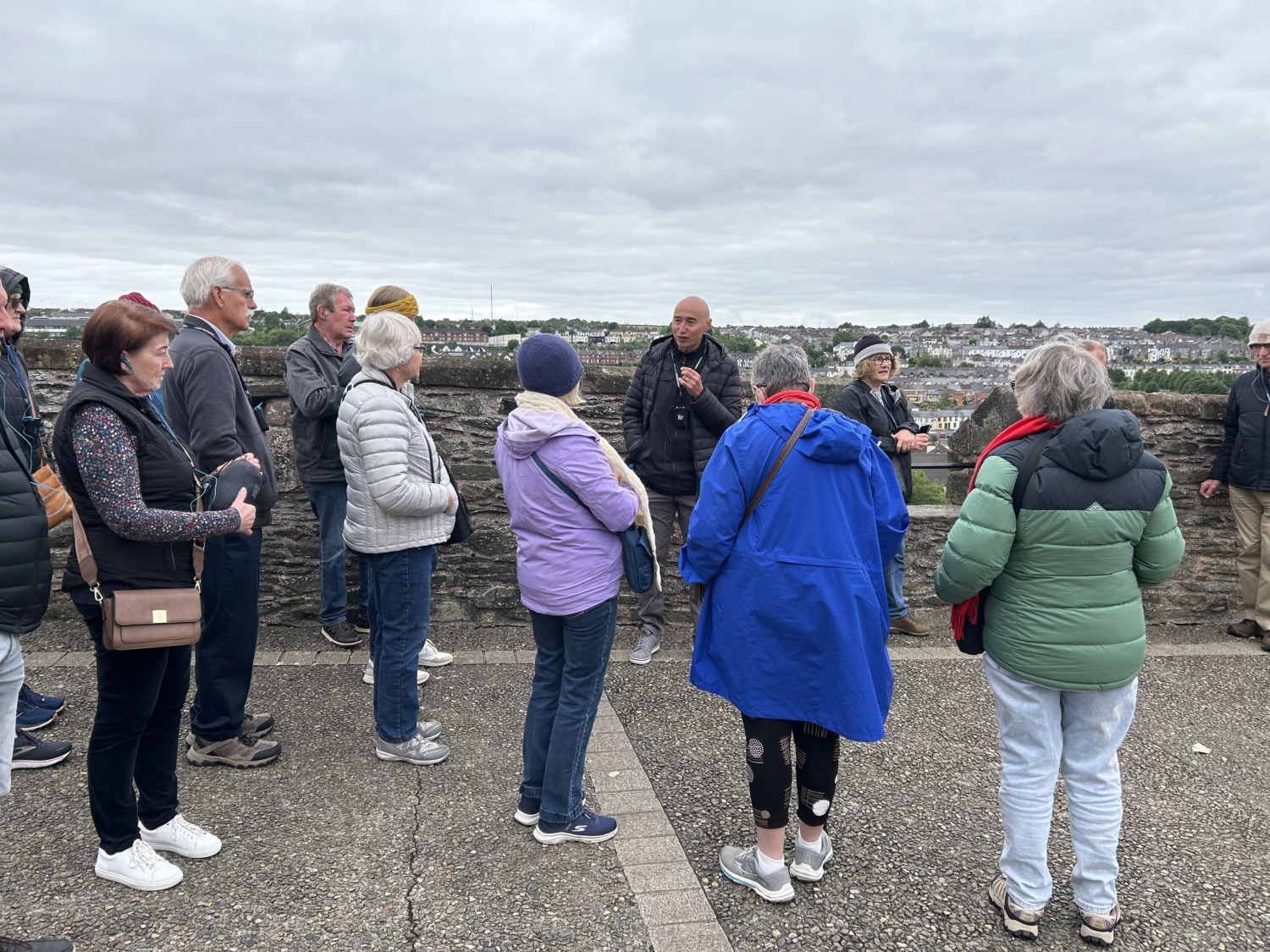
We took a walking tour of the Londonderry city center and our tour guide was very interesting. His name is Ronan and he is Chinese-Irish, Buddhist-Catholic. He teaches at an integrated school which means that it has Protestant and Catholic students. Ronan hopes that his children, and their generation, will be able to bridge the gaps that are still so apparent in the city and country. He sees signs of hope in the peace bridge and the peace garden.
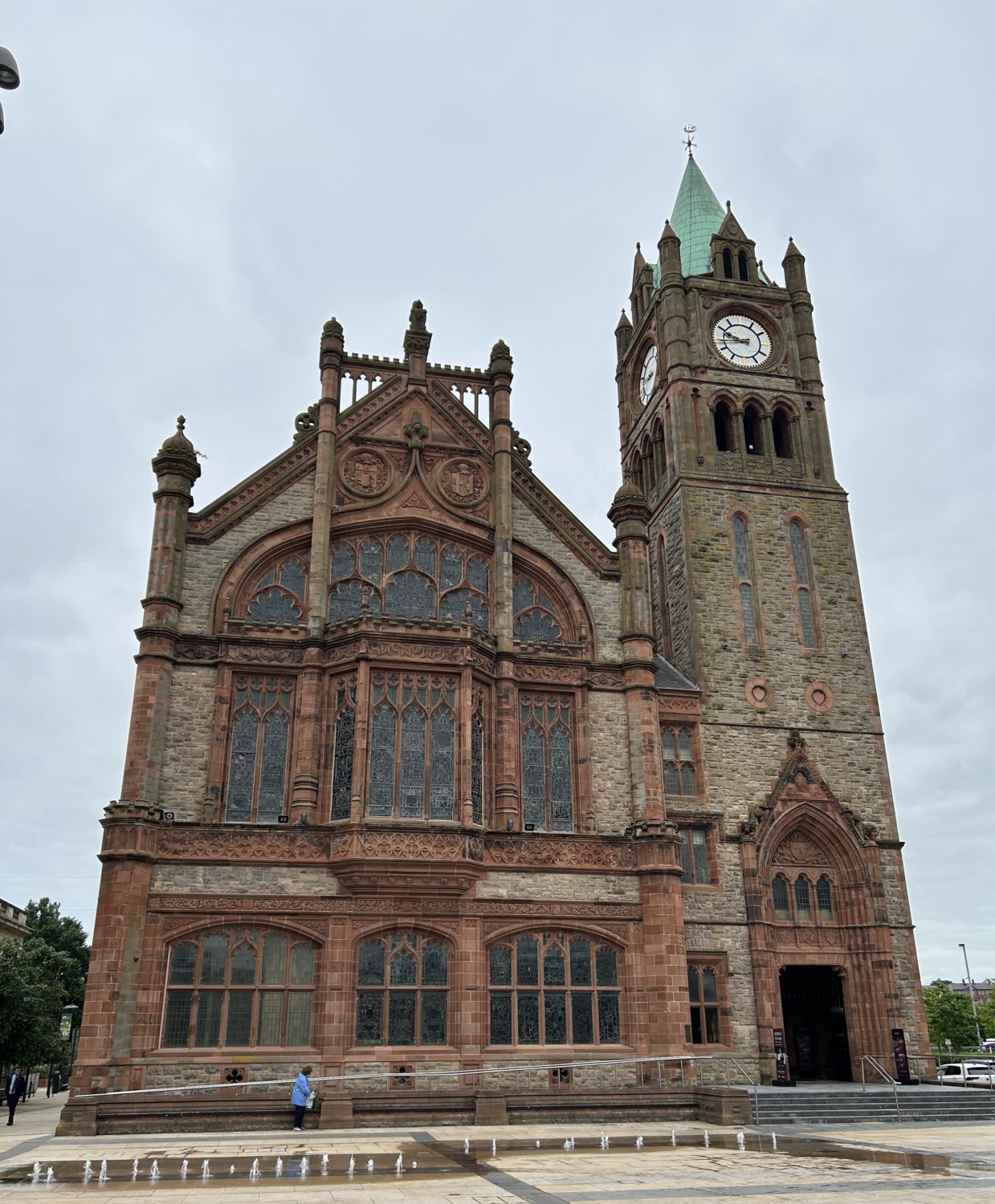
But even the city’s name is controversial. It was called Derry by the Irish and the London was added by the British. The Irish Protestants, who have lived in the place for generations, see no reason to change the name. The Irish Catholics see the name as a sign of subjugation.

The tour was very interesting and gave me a lot to think about. How do we find a way to build “we” when it has been generations of “us” versus “them”? It would be a useful lesson for many groups of people.
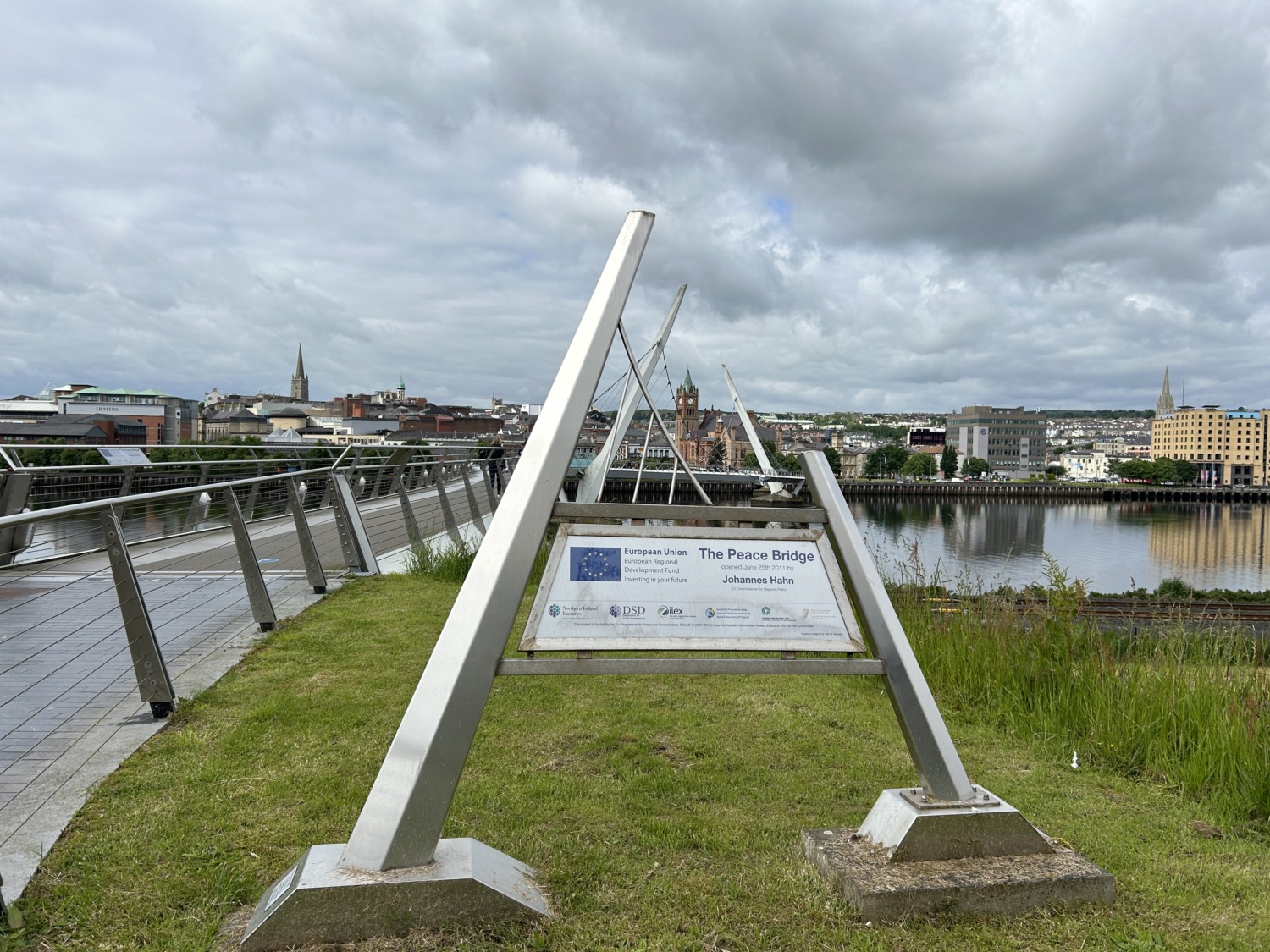
When our tour ended, we had some free time in Londonderry. Tom and I went through the Guild Hall museum. We saw the statue of Queen Victoria that had a hand blown off when the building was bombed. Then we walked across the Peace bridge. From one direction it looks as if the supports of the bridge are pointing away from each other. From the other side, the supports look like they are pointing toward each other. Beautiful and intriguing.
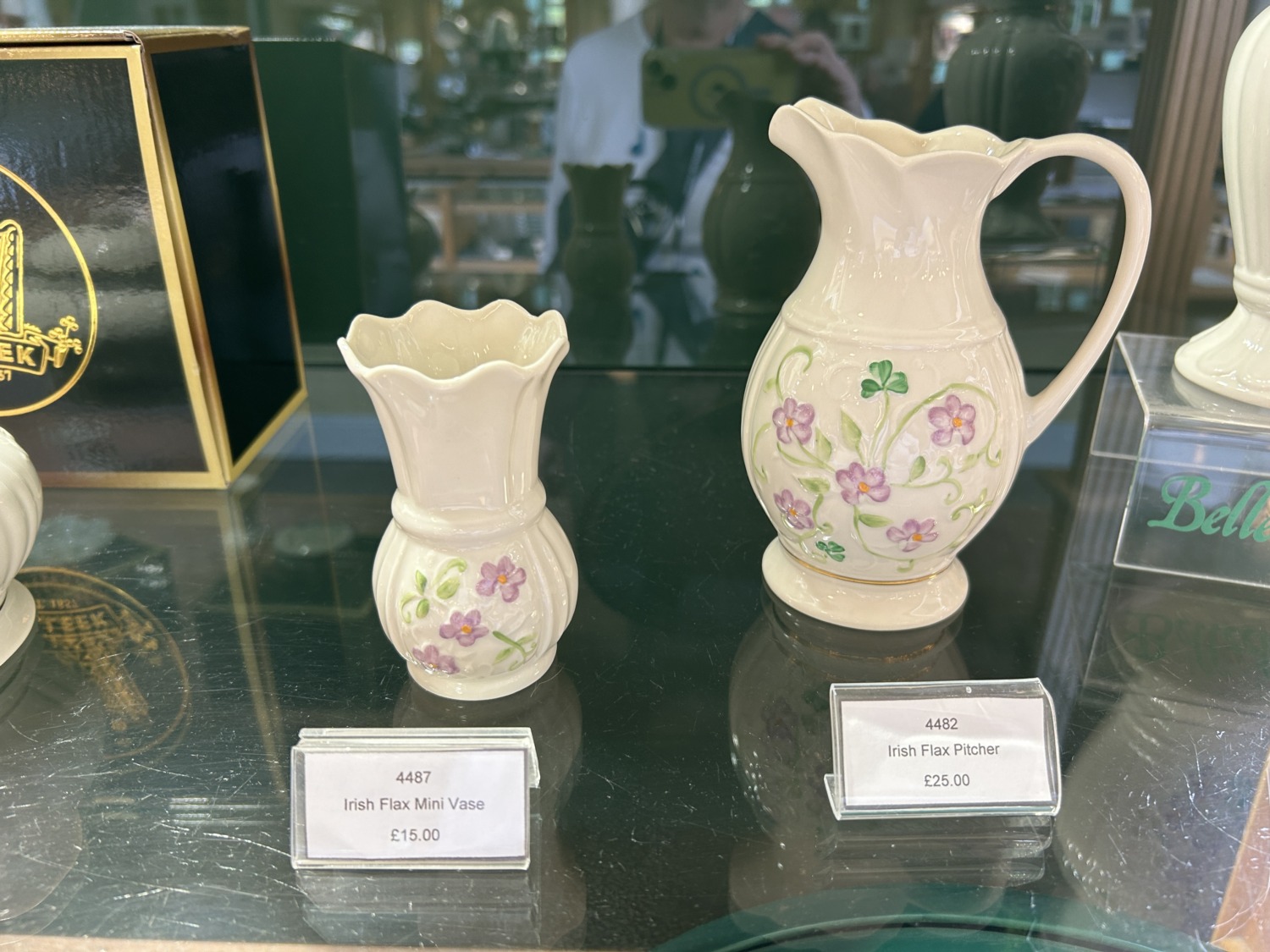
Our tour group had lunch in Donegal, which is a busy tourist town. Then we headed to the Belleek Pottery Factory for a tour. It was fascinating to see how all the intricate designs are made. The factory has been
operating since 1857. I admired all the lovely pieces without any desire to buy any of them. Although they
offered to ship it, it doesn’t fit in my lifestyle, not to mention my suitcase.

Our final tour stop for the day was Mullaghmore Peninsula. It is a lovely bay with a view of the
Mountbatten home. Lord Mountbatten was killed by an IRA explosion on his boat in the bay in 1979.
Despite its bloody history, we enjoyed the rare sunshine and slight breeze blowing off the ocean.
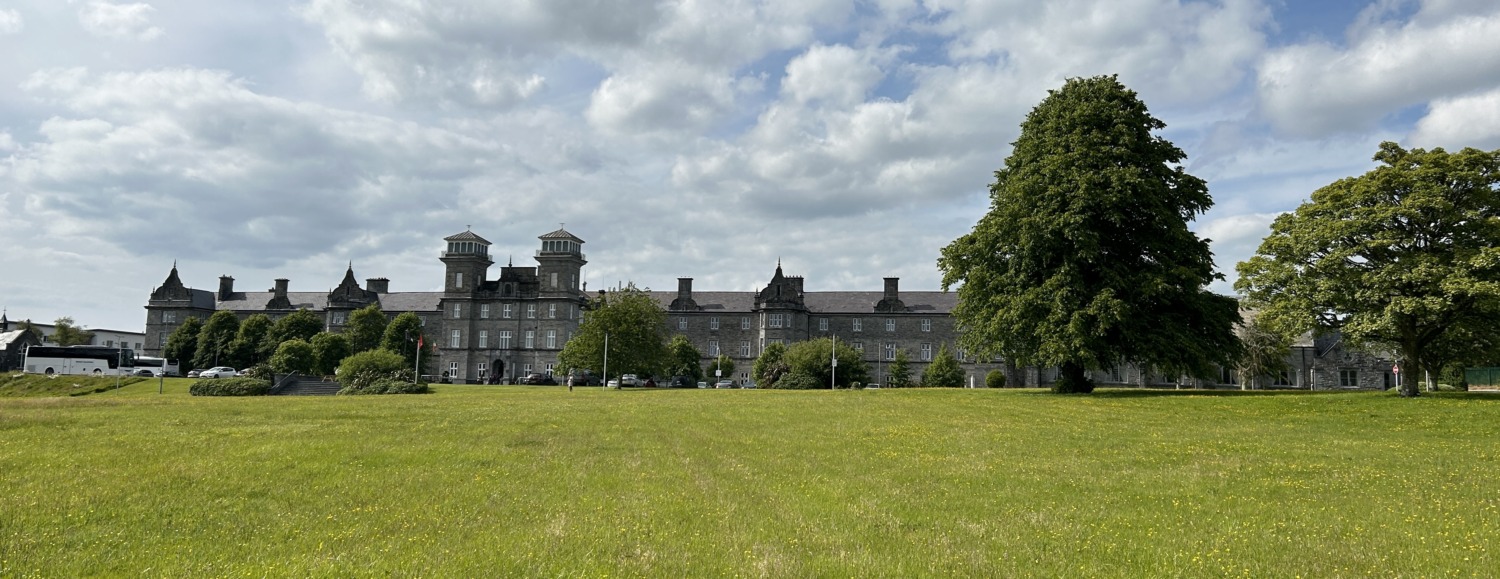
Our hotel in Sligo that night, the Clayton Hotel, was very unusual. It looked like a grand country estate. But it was a psychiatric hospital built in 1855. It is said to be haunted and we definitely got a creepy vibe from it. For instance, although we had an attached bathroom, it was around the corner and down a long hall. A
door in our room (which Tom kept thinking was the bathroom) led to a supply closet (we think). It was
locked and there was a light on inside that shone all night.
The hotel had gardens and a large lawn and we walked all around. We were actually trying to get to the
convenience store, which Google maps said was just behind the hotel. But there was a high metal fence
all around the hotel and we couldn’t get out. When we gave up and went back to the room, we googled
walking directions, and found we had to walk a mile around to get to the place 100 feet from the hotel.
Oh well. As our tour guide, Nigel, says “mustn’t grumble.”
Tom and I were glad to visit Northern Ireland but also glad to leave. The violence and pain is just a little
too close. The peace seems to be holding, but until people are willing to let go of their prejudices, things
will never really be peaceful. Sounds like anyplace we might live.
